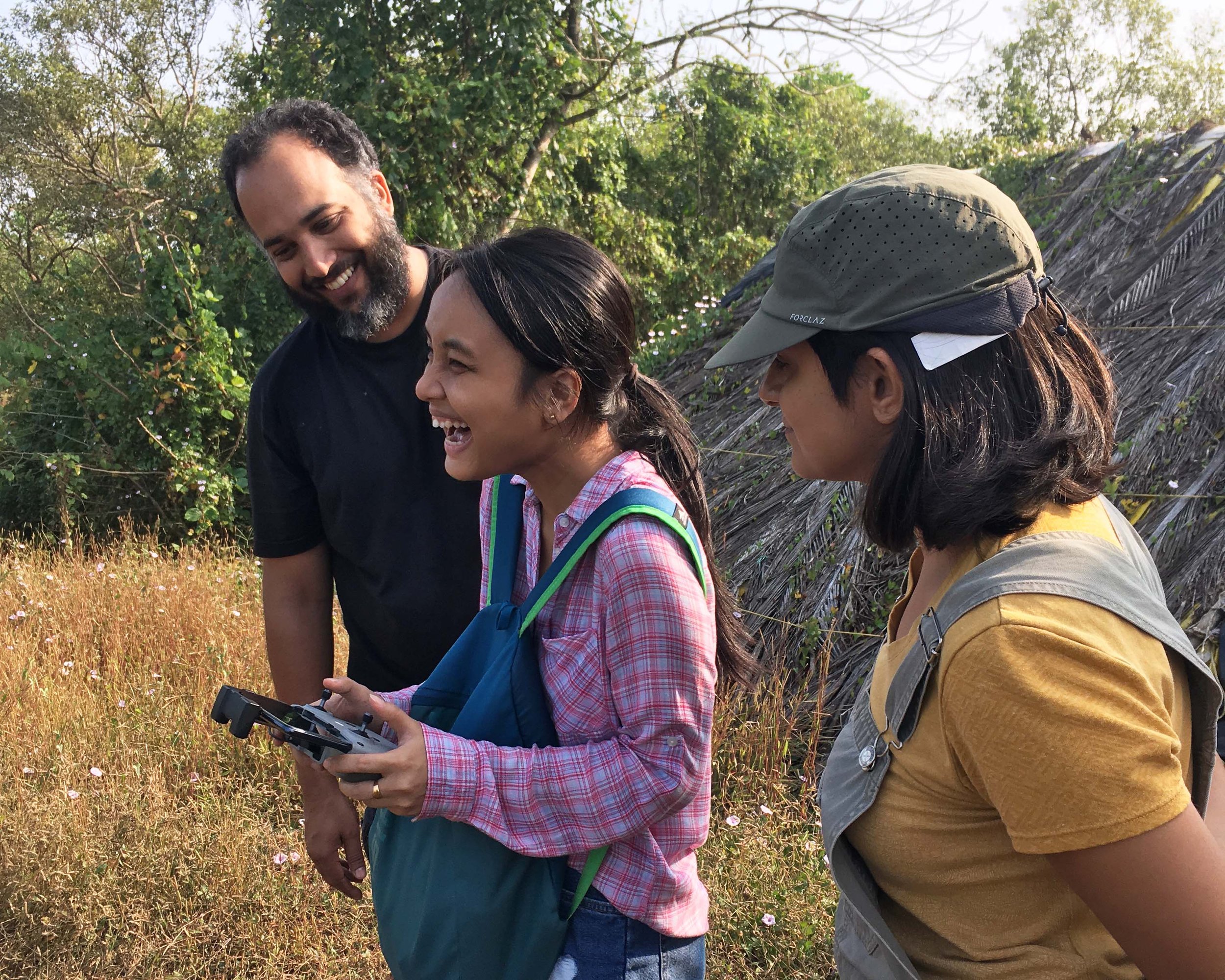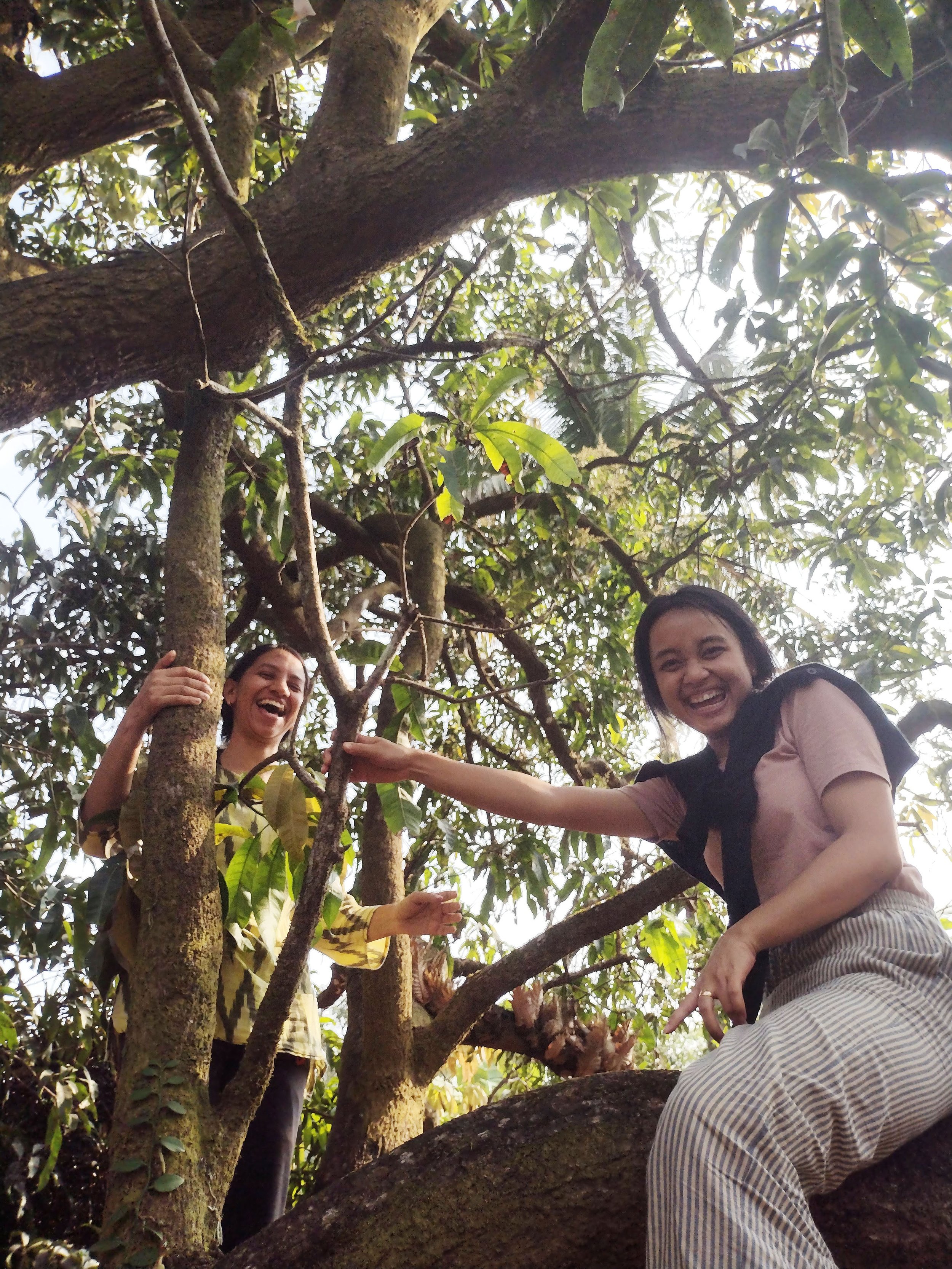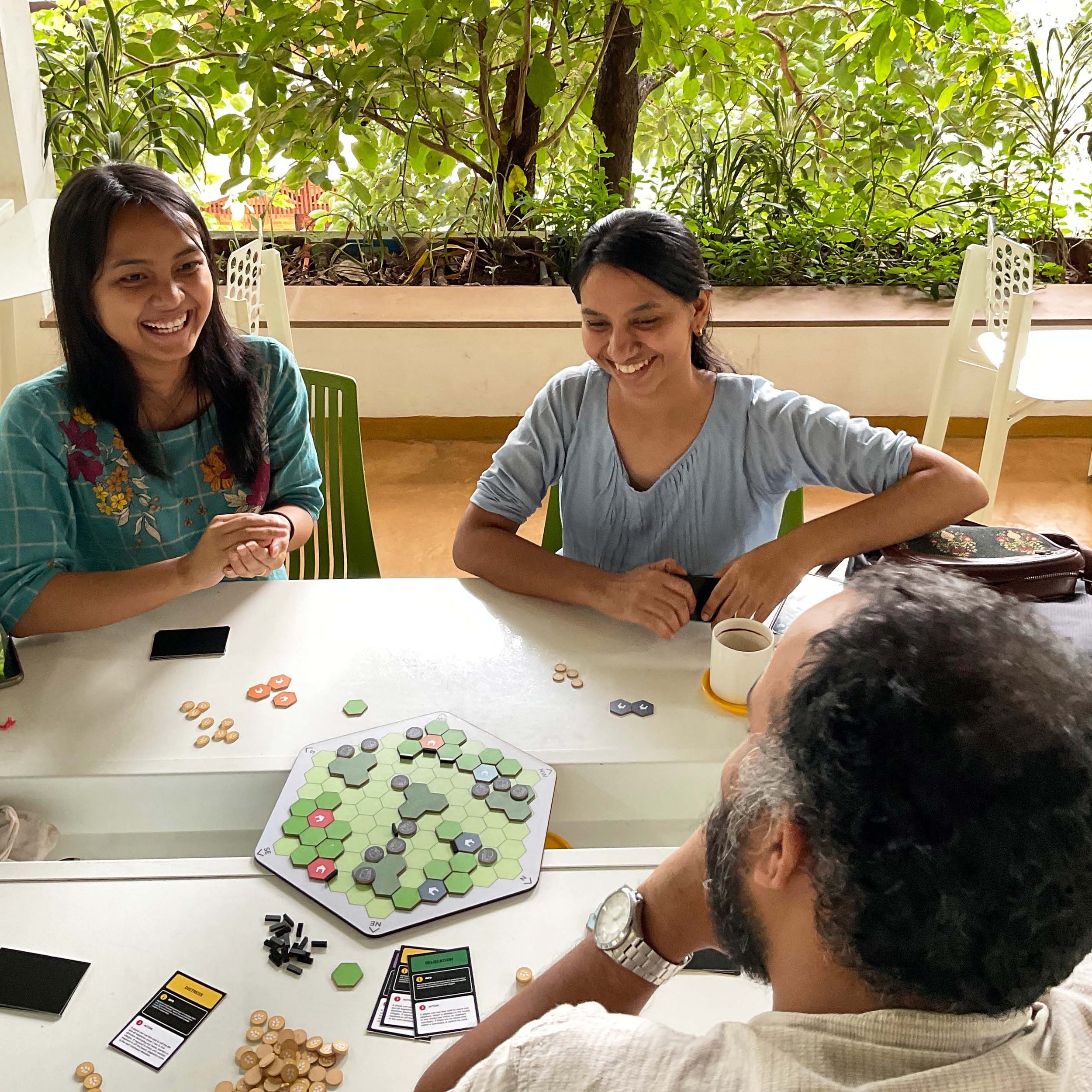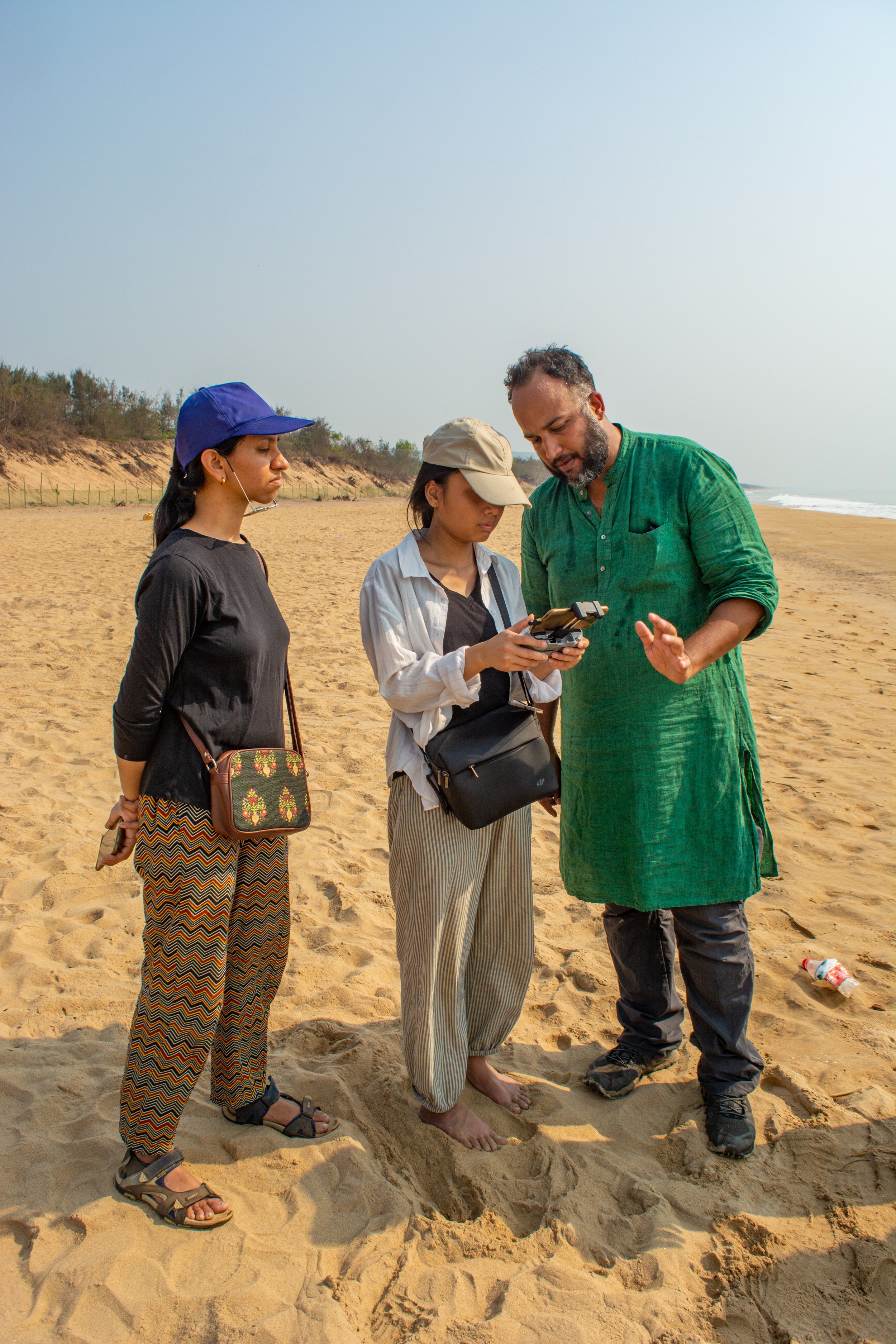I think everybody very prominently remembers their first job and the experiences that came with it. Similarly, my journey started after I spent the end months of 2021 looking for opportunities, after completing my Master’s education. It was a phase of uncertainty and at times, I did feel anxious. I applied to Technology for Wildlife Foundation but didn’t get selected in the first go. However, I remember I appreciated the hiring process at TfW- mostly because the interaction with the team during interviews was quite warm, and I was happy with my performance in the test they held. I wrote back to Shashank, genuinely appreciating the process, even though I missed the chance to work with them. At the back of my mind, I still looked forward to working with them in the future.
Flying a drone with the team.
Fast-forward to May 2022, in the middle of my ongoing internship, I received an email saying they had a vacancy for the post of Conservation Geographer at TfW and were interested in taking me on board. That email felt like a manifestation (not an exaggeration). I remember jumping with joy and finding it hard to believe.
Aditi holding her first-ever business cards.
Starting my first job was filled with feelings of excitement and nervousness. It brought with it many changes-; like moving to Goa- a place I had never even visited beforehand, with many firsts- like seeing the sea for the first time, flying kites, trying football and conquering the fear of water. I was worried about fitting in, understanding the office culture, and getting to know my new colleagues. I had heard stories of people not liking their job experiences and somewhat had the impression that maybe that’s how it worked. But maybe hard work and luck worked for me. I met some of the best people there and now have a beautiful experience to share.
Experiencing sunset at the Arabian Sea, another first.
Before joining, my role in the organisation was explained to me. My position was of a Conservation Geographer and I remember during my interview, Shashank asked me “Do you want to do GIS because you like GIS or would you do conservation that has GIS in it?” I chose the second option and got to practise what I was promised.
Learning to use a Remotely Operated Vehicle (ROV).
I got to work with many different organisations, and create maps that lead to tangible changes. Creating maps for Mongabay-India’s conservation stories was one of my longest running commitments in the organisation. The arrival of each story was exciting because of the process- of trying out methods and deciding what kind of map would best depict the conservation story. I remember I felt quite challenged when I got my third mapping task for Mongabay-India which required me to create port boundaries from descriptions. At first, it felt like riddles, but in the end, it was one of my most impactful maps and I am proud of it.
In the beginning, because I was new and developing skills, I was anxious to complete the task that I was given and ended up working long hours. Shashank, who I was reporting to, checked on me because working longer hours or on weekends is highly discouraged at TfW. I was taught to have a work-life balance and to focus on myself along with the job. One of the most valuable aspects of this experience was the relationships that I formed. This job introduced me to wonderful people- my colleagues who were also mentors, as well as others working in the field of conservation.
Climbing trees on a field trip.
I wouldn’t have ever imagined all these possibilities without this platform, a vision that Shashank brought to life. This was made more unique because of the team- mostly women- working together through thick and thin. Even though our work is technological, there was nothing robotic about the team. It was built as a safe space filled with warmth, learning, and encouragement to do amazing work. Even though I now bid adieu to this organisation, I will be forever grateful to the team, for the experience I got here and for setting my standard so high.
Play-testing a board game with the TfW team.














